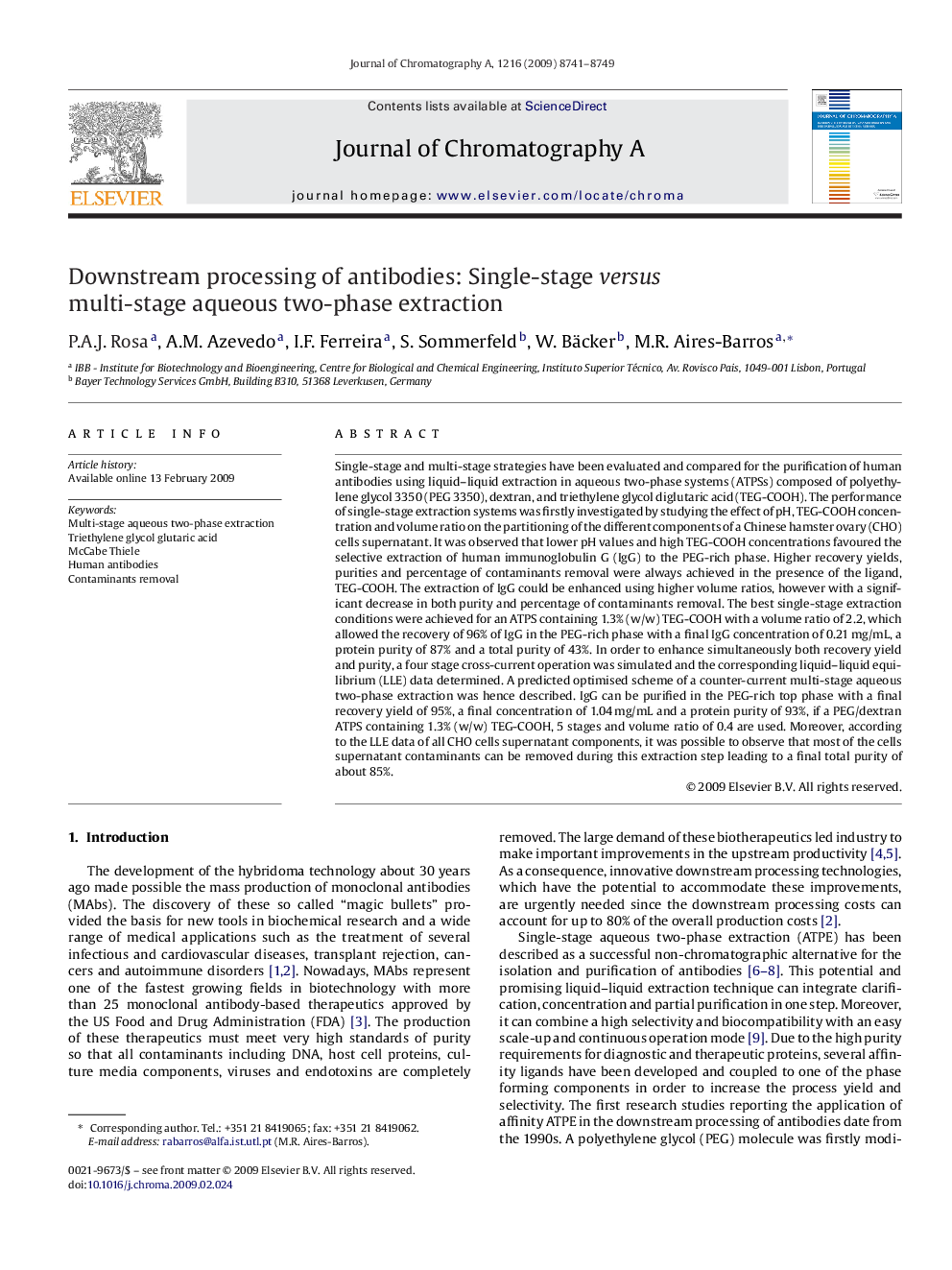| Article ID | Journal | Published Year | Pages | File Type |
|---|---|---|---|---|
| 1205622 | Journal of Chromatography A | 2009 | 9 Pages |
Single-stage and multi-stage strategies have been evaluated and compared for the purification of human antibodies using liquid–liquid extraction in aqueous two-phase systems (ATPSs) composed of polyethylene glycol 3350 (PEG 3350), dextran, and triethylene glycol diglutaric acid (TEG-COOH). The performance of single-stage extraction systems was firstly investigated by studying the effect of pH, TEG-COOH concentration and volume ratio on the partitioning of the different components of a Chinese hamster ovary (CHO) cells supernatant. It was observed that lower pH values and high TEG-COOH concentrations favoured the selective extraction of human immunoglobulin G (IgG) to the PEG-rich phase. Higher recovery yields, purities and percentage of contaminants removal were always achieved in the presence of the ligand, TEG-COOH. The extraction of IgG could be enhanced using higher volume ratios, however with a significant decrease in both purity and percentage of contaminants removal. The best single-stage extraction conditions were achieved for an ATPS containing 1.3% (w/w) TEG-COOH with a volume ratio of 2.2, which allowed the recovery of 96% of IgG in the PEG-rich phase with a final IgG concentration of 0.21 mg/mL, a protein purity of 87% and a total purity of 43%. In order to enhance simultaneously both recovery yield and purity, a four stage cross-current operation was simulated and the corresponding liquid–liquid equilibrium (LLE) data determined. A predicted optimised scheme of a counter-current multi-stage aqueous two-phase extraction was hence described. IgG can be purified in the PEG-rich top phase with a final recovery yield of 95%, a final concentration of 1.04 mg/mL and a protein purity of 93%, if a PEG/dextran ATPS containing 1.3% (w/w) TEG-COOH, 5 stages and volume ratio of 0.4 are used. Moreover, according to the LLE data of all CHO cells supernatant components, it was possible to observe that most of the cells supernatant contaminants can be removed during this extraction step leading to a final total purity of about 85%.
